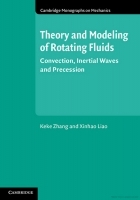Optimisation methods for programming CNC machine tools
Metody optymalizacji programowania obrabiarek CNC *
Author: Adam Zalewski, Wit Grzesik, Krzysztof Jarosz
Mechanik nr 08/09/2024 - Obrabiarki
ABSTRACT: This paper presents some important methods of optimisation of CNC programming which covers: algorithms of feed changes along the path of tool movement, the concept of feature-based recognition machining (FBM), numerical simulation (FEM/FEA), advanced virtual modelling of machining systems, real-time process simulations with the use of digital twins (DTs) and intelligent control strategies based on the STEP-NC standards. Select examples of practical industrial applications are overviewed and future development trends are discussed.
KEYWORDS: CNC machine tool, control program, feed optimisation, numerical simulation, virtual simulation, STEP-NC interface
STRESZCZENIE: W artykule przedstawiono ważne metody optymalizacji programowania obrabiarek CNC obejmujące: algorytmy zmiany posuwu wzdłuż trajektorii ruchu narzędzia, koncepcję rozpoznawania cech przedmiotu (FBM), symulację numeryczną MES, zaawansowane modelowanie wirtualne systemu obróbkowego, symulację procesu w czasie rzeczywistym z wykorzystaniem techniki bliźniaka cyfrowego oraz inteligentne sterowanie na bazie interfejsu STEP-NC. Podano przykłady praktyczne stosowane w różnych pakietach CAD/CAM i omówiono kierunki dalszego rozwoju.
SŁOWA KLUCZOWE: obrabiarka CNC, program sterujący, optymalizacja posuwu, symulacja numeryczna, symulacja wirtualna, interfejs STEP-NC
BIBLIOGRAFIA / BIBLIOGRAPHY:
[1] Moriwaki T., Shirase K. “Intelligent machine tools: Current status and future direction”. International Journal of Manufacturing Technology and Management. 9, 3/4 (2006): 204–218, https://www.researchgate.net/publication/220572721.
[2] Zalewski A., Grzesik W. (red.), Deja M., Jarosz K., Ruszaj A. „Podstawy programowania i funkcjonowania obrabiarek CNC. Procesy ubytkowe, przyrostowe i hybrydowe”. Warszawa: PWN (2024).
[3] Jarosz K., Grzesik W. “Development of techniques improving functional and programming abilities of intelligent CNC machine tools/Rozwój technik wspomagania funkcjonowania i programowania inteligentnych obrabiarek CNC. Mechanik. 7 (2024): 6–12, https://doi.org/10.17814/mechanik.2024.7.12.
[4] Yamato S., Sencer B., Beaucamp A. Tool path planning and feed scheduling for time dependent processes. Tolio T. (red.). “CIRP novel topics in production engineering”. Lecture Notes in Mechanical Engineering. 1 (2024): 185–231, https://doi.org/10.1007/978-3-031-54034-9_3.
[5] Witt M., Schumann M., Klimant P. “Real-time machine simulation using cutting force calculation based on a voxel material removal model”. International Journal of Advanced Manufacturing Technology. 105 (2019): 2321–2328, https://doi.org/10.1007/s00170-019-04418-2.
[6] van‘t Erve T. “NX CAM Feature-Based Machining (FBM) Introduction”. NX CAM Development.
[7] „Obróbka, planowanie części i generowanie NC z wykorzystaniem PMI”, www. https://cador.pl/inzynieria-w-praktyce/nx-pmi-w-cam/ (dostęp: lipiec 2024).
[8] Lou P., Liu S., Hu J., Li R., Xia Z., Yan J. “Intelligent machine tool based on edge-cloud collaboration”. IEEE Access (2020): https://doi.org/10.1109/ACCESS.2020.3012829.
[9] Roth T., Heigel J., Marusich K., Thimm B. “Leveraging Transients and Material Properties to Improve Machining Material Removal”. Tolio T. (red.). CIRP Novel Topics in Production Engineering. Lecture Notes in Mechanical Engineering. 1 (2024), https://doi.org/10.1007/978-3-031-54034-9_3.
[10] Afazov S., Scrimieri D. “Chatter model for enabling a digital twin in machining”. International Journal of Advanced Manufacturing Technology. 110 (2020): 2439–2444.
[11] Grzesik W. “Digital Twin in manufacturing. Part II. Case studies in removal and additive machining processes/Cyfrowy bliźniak w procesach wytwórczych. Część II. Przykłady zastosowań w skrawaniu i obróbce przyrostowej”. Mechanik. 2 (2023): s. 6–14, https://doi.org/10.17814/mechanik.2023.2.4.
[12] Jarosz K., Özel T. “Machine learning approaches towards digital twin development for machining systems”. International Journal of Mechatronics and Manufacturing Systems. 15, 2–3 (2022): 127–148, https://doi.org/10.1504/IJMMS.2022.124922.
[13] „SINUMERIK – Inteligentne rozwiązania dla obrabiarek”, www.siemens.pl/sinumerik (dostęp: lipiec 2024).
[14] Jeon B., Yoon J.S., Um J., Suh S.H. “The architecture development of Industry 4.0 compliant smart machine tool system (SMTS)”. Journal of Intelligent Manufacturing. 31, 8 (2020): 1837–1859.
[15] “STEP/STEP-NC as a Solution for Data Interoperability in the CAx Chain”, https://ukdiss.com/examples/step-step-nc-data-interoperability-cax-chain.php (dostęp: lipiec 2024).
[16] Zhang Y., Yu X., Sun J., Zhang Y., Xu X., Gong Y. “Intelligent STEP-NC-compliant setup planning method”. Journal of Manufacturing Systems. 62 (2022): 62–75, https://doi.org/10.1016/j.jmsy.2021.11.002.
[17] Jarosz K., Chen Y.-T., Liu R. “Investigating the differences in human behavior between conventional machining and CNC machining for future workforce development: A case study”. Journal of Manufacturing Processes. 96 (2023): 176–192, https://doi.org/10.1016/j.jmapro.2023.04.037.
[18] Habel J. „Cyfrowa reprezentacja procesu technologicznego obróbki na podstawie rozszerzonego standardu STEP-NC w kontekście Przemysłu 4.0”. Knosala R. (red.): „Inżynieria zarządzania: cyfryzacja produkcji. Aktualności badawcze 3”. Warszawa: Polskie Wydawnictwo Ekonomiczne, ISBN 978-83-208-2456-8 (2021).
[19] ICAM, https://www.icam.com (informacje o programach firmy ICAM – postprocesory, symulacja i optymalizacja parametrów procesu obróbki skrawaniem na obrabiarkach CNC) (dostęp: lipiec 2024).
[20] https://www.cloudnc.com/cam-assist/fusion-360 (informacje o programie CAM Assist firmy CloudNC) (dostęp: lipiec 2024).
DOI: https://doi.org/10.17814/mechanik.2024.8-9.16
* Artykuł recenzowany



















